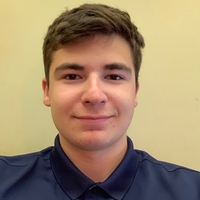Understanding SARS-CoV-2 Vaccine Design Through Multi-Level Journal Club
In order to circumnavigate the challenges of a virtual laboratory experience, students constructed a weekly journal club for all the summer interns in the Stedman lab. Nine students ranging in age from 16 to 20 met weekly to discuss academic papers relevant to the endeavors of the lab: specifically, the development of a vaccine for COVID-19. In order to effectively synthesize the constant influx of new information about the novel virus SARS-CoV-2, students had to become proficient in cell and structural biology, immunological processes, and of course learn to read the primary literature itself. Topics covered include T cell function, target-receptor binding, and dendritic cell (DC) differentiation and function. For example, the constitutive resistance of CD141+ DCs in conjunction with the permissivity of CD1c+ DCs to infection answered a vital question about our research. In addition to learning topics from the ground up and analyzing primary literature and supporting figures, students also learned to take advantage of the NCBI database and use software like iCn3D. Students were able to render and print a 3D representation of the Spike protein, one of the four structural proteins in SARS-CoV-2 and the most popular target for vaccine development in the current literature. The Spike protein is the outermost protein of the coronavirus and it plays an essential role during infection. The S2 domain goes through a conformational change upon binding to the human ACE2 receptor that allows for membrane fusion and cell infiltration. Students used BLAST and VAST align software to compare the structures and amino acid sequences of the Spike proteins of different types of coronaviruses, a valuable tool when predicting the structure of the SARS-CoV-2 Spike and how it interacts with human host cells. Through the use of these programs, students were able to work alongside the lab to hypothesize a robust vaccine design. This summer’s work was an experiment to determine if it is possible to learn how to think like a scientist without ever stepping foot in lab. In our opinion, it was a success. In fact, the nature of our circumstances forced students at every level to elevate their abilities, and we all became better scholars for it.

Comments